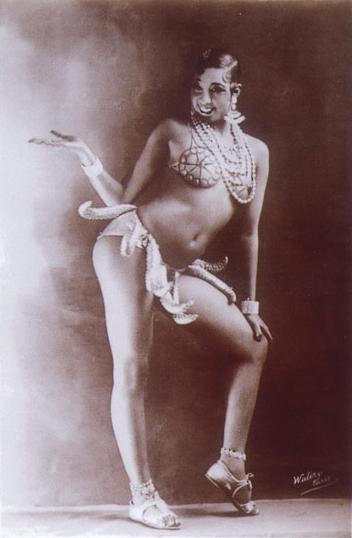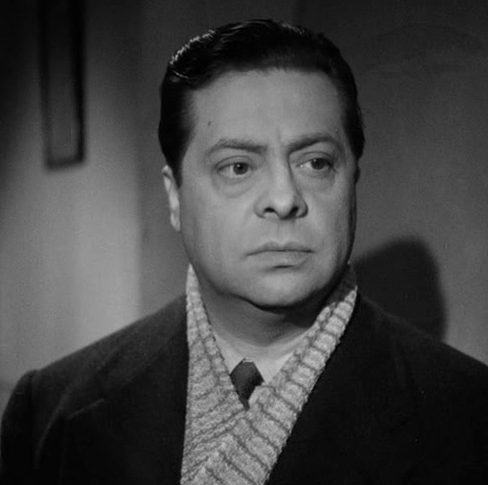|
Avanspettacolo
Avanspettacolo (literally: "before the show") is an Italian theatrical genre that developed between the 1930s and 1950s. Closely related to revue and variety show, avanspettacolo features a diverse mixture of music, ballet, sketch comedy, and other forms of entertainment. The genre emerged during the Fascist era, as a consequence of the promulgation of "modernist" laws that granted tax relief advantages to the theatres that were adapted to play movies. As a consequence, theatre companies were forced to devise a light and short form of representation that could be performed on the stage to entertain the audience before the "main show" (i.e., the movie). Since avanspettacolo began as a low-profile and minor adaptation of revue proper, and in the 1970s ended up including such things as strip tease shows, the term is sometimes used in a pejorative sense to refer to cheap, low quality comedy. Nevertheless, in the first half of the 20th century avanspettacolo served as a springboard ... [...More Info...] [...Related Items...] OR: [Wikipedia] [Google] [Baidu] |
Theatre In Italy
The theatre of Italy originates from the Middle Ages, with its background dating back to the times of the ancient Greek colonies of Magna Graecia, in Southern Italy, the theatre of the Italic peoples and the theatre of ancient Rome. It can therefore be assumed that there were two main lines of which the ancient Italian theatre developed in the Middle Ages. The first, consisting of the dramatization of Catholic liturgies and of which more documentation is retained, and the second, formed by pagan forms of spectacle such as the staging for city festivals, the court preparations of the jesters and the songs of the troubadours. Renaissance humanism was also a turning point for the Italian theatre. The recovery of the ancient texts, both comedies and tragedies, and texts referring to the art of the theatre such as Aristotle's '' Poetics'', also gave a turning point to representational art, which re-enacted the Plautian characters and the heroes of Seneca's tragedies, but also build ... [...More Info...] [...Related Items...] OR: [Wikipedia] [Google] [Baidu] |
Revue
A revue is a type of multi-act popular theatrical entertainment that combines music, dance, and sketches. The revue has its roots in 19th century popular entertainment and melodrama but grew into a substantial cultural presence of its own during its golden years from 1916 to 1932. Though most famous for their visual spectacle, revues frequently satirized contemporary figures, news or literature. Similar to the related subforms of operetta and musical theatre, the revue art form brings together music, dance and sketches to create a compelling show. In contrast to these, however, revue does not have an overarching storyline. Rather, a general theme serves as the motto for a loosely-related series of acts that alternate between solo performances and dance ensembles. Owing to high ticket prices, ribald publicity campaigns and the occasional use of prurient material, the revue was typically patronized by audience members who earned more and felt even less restricted by middle-class ... [...More Info...] [...Related Items...] OR: [Wikipedia] [Google] [Baidu] |
Variety Show
Variety show, also known as variety arts or variety entertainment, is entertainment made up of a variety of acts including musical theatre, musical performances, sketch comedy, magic (illusion), magic, acrobatics, juggling, and ventriloquism. It is normally introduced by a Master of Ceremonies, compère (master of ceremonies) or Television presenter, host. The variety format made its way from the Victorian era stage in Britain and America to radio and then television. Variety shows were a staple of English language television from the late 1940s into the 1980s. While still widespread in some parts of the world, such as in the United Kingdom with the ''Royal Variety Performance'', and South Korea with ''Running Man (South Korean TV series), Running Man'', the proliferation of multichannel television and evolving viewer tastes have affected the popularity of variety shows in the United States. Despite this, their influence has still had a major effect on late night television whose la ... [...More Info...] [...Related Items...] OR: [Wikipedia] [Google] [Baidu] |
Sketch Comedy
Sketch comedy comprises a series of short, amusing scenes or vignettes, called "sketches", commonly between one and ten minutes long, performed by a group of comic actors or comedians. The form developed and became popular in vaudeville, and is used widely in variety shows, comedy talk shows, and some sitcoms and children's television series. The sketches may be improvised live by the performers, developed through improvisation before public performance, or scripted and rehearsed in advance like a play. Sketch comedians routinely differentiate their work from a "skit", maintaining that a skit is a (single) dramatized joke (or "bit") while a sketch is a comedic exploration of a concept, character, or situation. definition 3b, Merriam-Webster online. Retrieved 5/4/2019 History Sketch comedy has its origins in |
Movie Theatre
A movie theater (American English), cinema (British English), or cinema hall (Indian English), also known as a movie house, picture house, the movies, the pictures, picture theater, the silver screen, the big screen, or simply theater is a building that contains auditoria for viewing films (also called movies) for entertainment. Most, but not all, movie theaters are commercial operations catering to the general public, who attend by purchasing a ticket. The film is projected with a movie projector onto a large projection screen at the front of the auditorium while the dialogue, sounds, and music are played through a number of wall-mounted speakers. Since the 1970s, subwoofers have been used for low-pitched sounds. Since the 2010s, the majority of movie theaters have been equipped for Digital cinema#Digital projection, digital cinema projection, removing the need to create and transport a physical film stock#Intermediate and print stocks, film print on a heavy reel. A great ... [...More Info...] [...Related Items...] OR: [Wikipedia] [Google] [Baidu] |
Strip Tease
A striptease is an erotic or exotic dance in which the performer gradually undresses, either partly or completely, in a seductive and sexually suggestive manner. The person who performs a striptease is commonly known as a "stripper" or an "exotic dancer". In Western countries, the venues where stripteases are performed on a regular basis are now usually called strip clubs, though they may be performed in venues such as pubs (especially in the United Kingdom), theaters and music halls. At times, a stripper may be hired to perform at a bachelor or bachelorette party. In addition to providing adult entertainment, stripping can be a form of sexual play between partners. This can be done as an impromptu event or – perhaps for a special occasion – with elaborate planning involving fantasy wear, music, special lighting, practiced dance moves, or unrehearsed dance moves. Striptease involves a slow, sensuous undressing. The stripper may prolong the undressing with delayi ... [...More Info...] [...Related Items...] OR: [Wikipedia] [Google] [Baidu] |
Eduardo De Filippo
Eduardo De Filippo (; 24 May 1900 – 31 October 1984), also known simply as ''Eduardo'', was an Italian actor, director, screenwriter and playwright, best known for his Neapolitan works ''Filumena Marturano'' and '' Napoli Milionaria''. Considered one of the most important Italian artists of the 20th century, De Filippo was the author of many theatrical dramas staged and directed by himself first and later awarded and played outside Italy. For his artistic merits and contributions to Italian culture, he was named '' senatore a vita'' by the President of the Italian Republic Sandro Pertini. Biography De Filippo was born in Naples from the affair between playwright and actor Eduardo Scarpetta and theatre seamstress and costumier Luisa De Filippo. He was the second of three children born from the couple, the other two being Annunziata "Titina" and Giuseppe "Peppino". His father was actually married since 1876 to Rosa De Filippo, Luisa's paternal aunt. His father Eduardo had ... [...More Info...] [...Related Items...] OR: [Wikipedia] [Google] [Baidu] |
Totò
Antonio Griffo Focas Flavio Angelo Ducas Comneno Porfirogenito Gagliardi de Curtis di Bisanzio (15 February 1898 – 15 April 1967), best known by his stage name Totò (), or simply as Antonio de Curtis, and nicknamed ''il Principe della risata'' ("the Prince of laughter"), was an Italian actor, comedian, screenwriter, dramatist, poet, singer and lyricist. He was commonly referred to as one of the most popular Italian performers of all time. He is best known for his funny and sometimes cynical character as a comedian in theatre and then in many successful films shot from the 1940s to the 1960s, but he also worked with many iconic Italian film directors in dramatic/poetic roles. Early life Totò was born Antonio Vincenzo Stefano Clemente on 15 February 1898 in the Rione Sanità, a poor district of Naples, the illegitimate son of Anna Clemente (1881–1947), a Sicilian woman, and the Neapolitan marquis Giuseppe de Curtis (1873–1944). His father did not legally recognize ... [...More Info...] [...Related Items...] OR: [Wikipedia] [Google] [Baidu] |
Aldo Fabrizi
Aldo Fabrizi (; born Aldo Fabbrizi; 1 November 1905 – 2 April 1990) was an Italian actor, director, screenwriter and comedian, best known for the role of the heroic priest in Roberto Rossellini's ''Rome, Open City'' and as partner of Totò in a number of successful comedies. Life and career Born in Rome into a humble family, Fabrizi debuted on stage in a suburban theater in 1931. He soon got local success thanks to his comical sketches and '' macchiette'' (i.e. comical monologues caricaturing stock characters), and became a star of the Roman revue and ''avanspettacolo''. He made his film debut during the war, in 1942, and in a short time established himself as one of the most talented actors of the time, spacing from comedy to drama. After a number of successful comedies, in 1945 he played the iconic Don Pietro in the neo-realist drama ''Rome, Open City'', and following the critical and commercial success of the film he had a number of leading roles in other neo-realist films. ... [...More Info...] [...Related Items...] OR: [Wikipedia] [Google] [Baidu] |
Lino Banfi
Lino Banfi (born Pasquale Zagaria; 9 July 1936) is an Italian film actor and presenter. He has appeared in more than 100 films since 1960. Biography He was born in the Apulian city of Andria and at the age of three, moved to Canosa di Puglia. Lino Banfi became one of the most well-known actors in Italian "sexy comedies" in the 1970s. In the 1980s he reached the peak of his fame by appearing in movies such as ''L'allenatore nel pallone'', '' Vieni avanti cretino'', ''Il commissario Lo Gatto'' and ''Occhio, malocchio, prezzemolo e finocchio''; he recently portrayed Grandpa Libero in Italian TV series Un medico in famiglia. During his career, nearly all of Lino Banfi's characters spoke with the distinctive pronunciation of the Bari dialect. Lino and his wife Lucia have been married since 1962 and have two children, Walter and Rosanna; Rosanna is also an actress. In 2000, Lino Banfi became a Goodwill Ambassador for the Italian National Committee for UNICEF. Filmography Films * ... [...More Info...] [...Related Items...] OR: [Wikipedia] [Google] [Baidu] |




